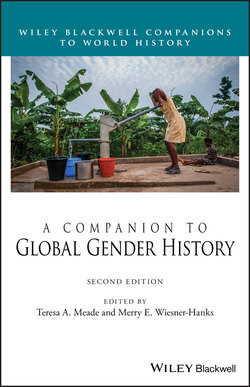Читать книгу A Companion to Global Gender History - Группа авторов - Страница 26
Chapter Three Structures and Meanings in a Gendered Family History
ОглавлениеMerry E. Wiesner‐Hanks
What is a family? Anyone familiar with current political and social debates in many parts of the world knows that this is an extremely controversial question, as issues such as marriage equality, surrogate motherhood, grandparents’ rights, trans parenthood, access to contraception, and others related to defining and regulating families highlight deep differences of opinion. Such controversies also make plain that the answer to this question is based in culture, and thus in history. Despite this, just as traditional history paid little attention to women, it also paid little attention to families, other than ruling dynasties, until the early 1970s. Initially, traditional historians regarded women’s and family history as the same thing, presuming that only women had families, and only within the family context were women’s roles important enough to warrant attention. For example, few biographies of the French thinker Jean‐Jacques Rousseau mentioned that he had several children out of wedlock with a servant and sent them all to foundling hospitals; until the last several decades, no studies questioned how his domestic arrangements might have shaped his ideas. By contrast, the fact that they were unmarried and childless was never left out of discussions of Queen Elizabeth I or Susan B. Anthony.
The assertion of a distinction between women’s and family history is made difficult not only by the millennia‐long tradition in which neither was part of “history,” but also by the fact that for most cultures in most periods, women’s experience has been linked to family life more than men’s. There are exceptions, but especially in written records, women’s familial relationships are expressed in law codes, religious prescriptions, taboos, political conceptualizations, and social norms. Those relationships were not necessarily private, as we would understand that term, and the women themselves may have weighted aspects of their identity differently, yet even in cultures in which men were also viewed as part of a family group, a woman’s relation to birth, marriage, and family defined her place in that culture more than did a man’s. In addition, factors relating to the family that shaped male experience, such as inheritance of a name or property, were seen as markers of class status, not family relationships.
Women’s history and family history are now more than forty years old, so perhaps the assertion of difference can be made less forcefully, particularly given the ways each intersects with the younger field of gender history. Actually, as with so much in both women’s and family history, it is self‐evident that both men and women of the past had families (however they were defined), and that their experiences as members of families shaped other aspects of their lives, although quite differently for boys and girls, men and women. Because the family or kinship group was the earliest form of social organization, gender prescriptions within the family have been the most enduring and difficult to change. Moreover, the consequences of breaking with prescribed patterns of family life might include disinheritance, social ostracism, outlawry, imprisonment, or even death. This chapter will touch on many of these topics, including the sources of family history, the structure and function of the family, relations within the family, and the family’s relationship to the state.
